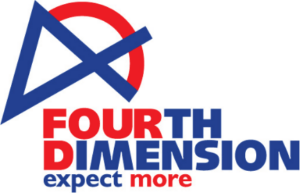
Amy Sample Ward: #23NTC!

Amy Sample Ward kicks off our coverage of the 2023 Nonprofit Technology Conference, hosted by NTEN. They cover the Conference details, and delve into weighing the benefits and risks of the fast-moving technology, artificial intelligence. They are the CEO of NTEN and our technology and social media contributor.
Renee Rubin Ross: Building An Inclusive Board Culture

Let us explore the signs and symptoms of your board’s current culture, and strategies to be more inclusive and equitable, if that’s something your nonprofit needs to pursue. Let us also dive into how to manage toxic people on your board. Renee Rubin Ross is founder and CEO of The Ross Collective.
Listen to the podcast
Podcast: Play in new window | Download
Get Nonprofit Radio insider alerts!I love our sponsor!
Donorbox: Powerful fundraising features made refreshingly easy.
We’re the #1 Podcast for Nonprofits, With 13,000+ Weekly Listeners
Board relations. Fundraising. Volunteer management. Prospect research. Legal compliance. Accounting. Finance. Investments. Donor relations. Public relations. Marketing. Technology. Social media.
Every nonprofit struggles with these issues. Big nonprofits hire experts. The other 95% listen to Tony Martignetti Nonprofit Radio. Trusted experts and leading thinkers join me each week to tackle the tough issues. If you have big dreams but a small budget, you have a home at Tony Martignetti Nonprofit Radio.
View Full Transcript
Processed on: 2023-04-18T04:51:48.972Z
S3 bucket containing transcription results: transcript.results
Link to bucket: s3.console.aws.amazon.com/s3/buckets/transcript.results
Path to JSON: 2023…04…636_tony_martignetti_nonprofit_radio_20230417.mp3.38847090.json
Path to text: transcripts/2023/04/636_tony_martignetti_nonprofit_radio_20230417.txt
[00:00:11.08] spk_0:
Hello and welcome to tony-martignetti
non profit radio. [00:02:02.99] spk_0:
Big nonprofit ideas for the other 95%. I’m your aptly named host of your favorite abdominal podcast. We’re beginning our 23 N TC coverage this week. And, oh, I’m glad you’re with me. I’d have to undergo counter immuno electrophoresis if you opposed me because you missed this week’s show. 23 N T C Amy Sample Ward kicks off our coverage of the 2023 nonprofit technology conference hosted by N 10. They cover the conference details and delve into weighing the benefits and risks of the fast moving technology, artificial intelligence. They are the C E O of N 10 and our technology and social media contributor also building an inclusive board culture. Let us explore the signs and symptoms of your board’s current culture and strategies to be more inclusive and equitable. If that’s something you’re non profit needs to pursue. Let us also dive into how to manage toxic people on your board. Renee Reuben Ross is founder and CEO of the Ross Collective on Tony’s take 2 23 N T C. Thanks. We’re sponsored by Donor box with intuitive fundraising software from donor box, your donors give four times faster helping you help others. Donor box dot org. And I’m sorry, my voice is a little horse because I did spend so much time capturing interviews at 23 N T C. Here is 23 T C with Amy Sample Ward. [00:03:08.83] spk_1:
Welcome back to tony-martignetti, non profit radio coverage of 23 N T C. You know that it’s the nonprofit technology conference hosted by N 10. This is not our first interview today, but I’m sure that this is going to be the kickoff of nonprofit radio’s coverage of 23 N T C where we and you’ll find out why very shortly where we are sponsored by Heller consulting to technology strategy and implementation for nonprofits. The reason that we’re going to do this interview first of the many 20 to be exact interviews from 23 NTC is because with me now is Amy Sample Ward. You know who they are, the CEO of N 10 and our technology and social media contributor, which makes them the grand imperial wizard and Grand Poobah of the 2023 nonprofit technology conference. Amy Sample Ward. It’s a real pleasure to see you in person. It [00:03:25.91] spk_2:
is wild to get to see you in person after all this time. I know I, I am touching you and I think I need to update my, my business card. The uh I have a whole string of titles now, I guess [00:03:28.75] spk_1:
well, to the extent you’re willing to put on your business card. [00:03:33.04] spk_2:
This was all a [00:03:43.27] spk_1:
joke. But nobody uses business cards anymore. So I’m not offended. Although there’s this little stack of cards, I’m trying to get rid of. Still some people take them. Yeah, there are some, maybe, [00:03:45.35] spk_2:
maybe they’re really helpful. Maybe [00:03:47.33] spk_1:
they’re all boomers. I don’t know. But somebody, somebody’s, there are people who would rather not just scan a code, would rather take a physical card. So I have [00:03:57.10] spk_2:
actually don’t even have business cards. You don’t, I don’t have business cards no longer if I wanted to [00:04:06.11] spk_1:
no longer. Okay. That’s fine. Well, then don’t add it to your business card. Um We’re at 23 NTC. Congratulations. [00:04:11.57] spk_2:
Congratulations happening. We are looking around at a big old hall. There are booths, there are people, there are snacks. [00:04:21.96] spk_1:
How many people, how many people are here with us in Denver? We [00:04:30.14] spk_2:
have 1600 people here in Denver. 400. That’s a lot of people online. Four [00:04:33.31] spk_1:
104 100 virtual 1600 in person. Yes, we’re feeding 1600 people toilet ng for 1600 people. Yes, we have, we [00:04:43.17] spk_2:
have lounges, we have many parks. We have everything. [00:04:47.19] spk_1:
Yes, there’s, there’s a quiet room, there’s birds of a feather rooms. There’s yoga. There’s, [00:05:18.21] spk_2:
did you see the, the everybody yoga out downstairs earlier? It was beautiful. It was like 50 people and it was yoga. You don’t need to have ever done. Yoga before you don’t need experience for everybody. You know, there were folks who were in chairs versus sitting on the floor, you know, and everybody was just doing it all together out in that big foyer downstairs. Yeah. Yeah, it was, it was beautiful [00:05:23.26] spk_1:
wall of windows. [00:05:42.24] spk_2:
Yeah. I mean, we can be at a technology conference but I think, you know, we’ve talked about this lots of times whether it’s the NTC or, or just how we think about technology in general. It’s actually not about the technology, right? It’s about people and people being able to meet the needs they have and honoring that those needs are different for different people. You know, like there have to be a lot of different lounges because you maybe want a different lounge that I want, right? Like somebody wants to not be talking. Tony-martignetti wants to be talking, you know, like to [00:06:08.22] spk_1:
talk. Yes, indeed. Right. So you, yeah, you take care of the whole person, you the NTC collective, the collective. Yes, the collective. Absolutely. Um Today’s keynote. Yeah, I don’t know which of the three I was interviewing [00:06:13.50] spk_2:
this morning was no ball. [00:06:15.34] spk_1:
Okay. What was, what was their message? [00:07:16.99] spk_2:
She had so many different things to talk about. And one thing that I want to call out and that encourage people to maybe think about themselves and go follow, go find she’s written books. She has lots of ways that you can follow her content. But this morning, we talked a lot about technology as a social economic and political practice. It is it is happening, you know, it’s not static, it isn’t just there. These are, these are ways that certain economic issues, classes dynamics are, are, are actively being managed. These tech through technology power, social dynamics are being managed, right? Like those things have been baked in from the beginning. So when we think of and we’ve certainly talked about this before, like bias that gets built into a tool. It isn’t just I like orange and you like blue or something, right? It’s biased that some people will forever be able to better use that tool. It’s bias that some people maybe never access that tool. That um the, the idea that we are in surveillance systems all of the time and we are kind of being told these are utilities, we must all use these tools right there. Their convenience, they’re making our lives better [00:07:45.95] spk_1:
safety and security are often uh just justifications. Yes. [00:08:51.14] spk_2:
Yes. And even if, even if it does feel this is this is the point that made this morning, maybe it does feel kind of casually better that the ads you’re getting are things maybe that you actually would consider buying versus something that’s totally unrelated to you that is not worth you. Your data being sold, used, misused and deciding who you are, right? Some of some of our data being sold um and being used by other, other. Well, anyone that isn’t us is deciding, can you get alone? Right? Can you do? Are we even gonna, like, actually believe that you can graduate from college? Are we gonna let you in? Are we gonna hire you for this job? Right. Um, so it isn’t just this like, I think we kind of, um, anim eyes it or make it, make it so generic that it loses a little bit of its harsh reality when we think, oh, the data is out there but whatever, it’s like my purchase history and I like that they recommended a good product, right. [00:09:05.44] spk_1:
Right. [00:09:56.03] spk_2:
But, but that same data set is determining if you know, like Sophia said in the UK, banks are looking at social media to decide if they’re going to give you a loan. Does it look like all the people that you’re connected to our, like historically separated from any access to wealth? Well, we’re not going to give you a loan. Well, then that means we’re not using, we’re not predicting anything we are deciding with that technology, right? This isn’t predictive analytics, this is restrictive analytics, right? We’re using this to gate keep and to continue to oppress people. Um And I think a really big part of that conversation too was we everybody here at the NTC and folks that are listening to non profit radio are folks who are both the users impacted by that and organizations in a position to maybe not realize they’re playing a part in that, you know, like, maybe you’re sending all of your users into those tools because it was easier. Or you thought they were already on Facebook or even if it’s not social media, you’re using a certain product and you didn’t realize that [00:10:23.67] spk_1:
because you didn’t do your due diligence around exactly their privacy rules. Jeez. You gave me chills. I’m getting my synesthesia kicked in and I’m sure it’s not the air conditioning, that’s it. We need to show about this remarkable [00:10:34.23] spk_2:
this, [00:10:34.53] spk_1:
right? We could be contributing ourselves, right? Uh innocuous, unknowingly [00:12:18.15] spk_2:
unknowingly, right? Um And she works um and as a faculty and leading a department at U C L A and brought up an example from the academic world of years ago when there was the tool that was being sold marketed to professors and universities that you could upload all of your students papers into it. And then it would tell you if they had plagiarized from the internet, you know, oh, that’s something else that already exists. And she and her colleagues immediately said, oh, this is not good. This is actually not good. And a lot of other folks like, what do you mean this means like we’re catching the students who were trying to plagiarize. Of course, we all know that means that small successful company got bought by a bigger company who knew what they could do with a big old data set. Right. So what just think if you wrote a paper in college when you’re still trying to, like, figure out your ideas and you’re still learning, like, the paper is meant to be a learning practice. It’s, it’s not meant to be published for the world. And now 15 years later you’re applying for a job and that shows up, you know, as part of your data record. Right. And maybe it has ideas that you fundamentally don’t believe now or even ever, but didn’t really know what you were saying and now you can’t get a job because people see this and say, oh, you wrote this paper. So as organizations, when we think we’re saving time or we think that we’re doing something by, by letting the robots do it so that we ourselves are not subjectively making decisions, right? We might actually be making even harder subjective decisions down the line for those people, right? We might be setting them up into systems where their data and their issues are. [00:14:14.62] spk_1:
This is so enormously timely with, with all the talk about artificial intelligence, chat, chat GPT. The other ones I can’t name off the top of my head and, and our use our use of them. Look, there was a guest on maybe an hour and a half ago. He said we’re not going to know it was Maureen will be off. I think we’re not, we can’t stop this. It’s like trying to stop the the, the innovation around automobiles, you know, or the phone or trying to stop airlines, airplane, airplane flight, it’s not possible but are smart use of it and, you know, are constrained use of it. So I shared with this another thing you and I, you and Gene and I need to talk about this, the three of us together, informed, informed and, and thoughtful and, you know, I’m concerned about the, the more the likely less the due diligence, but just the thought that goes into it. My concern is that I shared this with Maureen and um the advice, a lot of the advice that I see is use artificial intelligence as a first draft. And then so you’re not, you’re no longer facing the blank page, put a pin, I’ll come back to that in a second and then you put your own tone to it, your own language. That’s exactly my concern. You’re reducing yourself from creative thinker working from a blank blank screen to, to relegate it to copy editor. And I don’t mean to insult any copy editors [00:14:21.63] spk_2:
very valuable [00:14:22.73] spk_1:
but not nearly as creative process as looking at a blank screen working from [00:15:28.53] spk_2:
nothing. I think the really big piece of that is we have seen plenty of evidence. We do not need more evidence to know that what these artificial intelligence tools are providing to us is misinformation. The tool is not only giving us quote unquote facts, right? So it isn’t even that you need to add a copy editing layer. If you were to do that, you would need to go back and actually say, is any of this real like Sophia Sophia said this morning, they had received um you know, that other people in academia are making this point of, you know, oh, this is leveling the playing field, right? Because now folks who maybe aren’t naturally confident or comfortable writing and they communicate better in other ways. Now they could use artificial intelligence to help them get a jump start on the paper and then they edited and you know, whatever, but they have reviewed papers written in this way. All of the footnotes are not real articles, they’re not real books, right? Because artificial intelligence made up a book to reference. So [00:15:38.17] spk_1:
the footnotes are not [00:16:02.10] spk_2:
real, right? Because artificial intelligence was told to make a footnote. So it notated words in the format that it learned online is what a footnote looks like, right? So the idea that it is there, I like I like you’re saying, you know, the idea that gets us started and then we go in and like we judge it up. No, I mean, unless you’re using it for the outline structure of, I want an intro paragraph and then I want, you know, but what, what then is left that is viable. We are not helping people get a jump start. We are actively creating more in misinformation in in content. [00:17:14.98] spk_0:
It’s time for a break. Stop the drop with donor box there. The online donation platform. How many possible donors drop off before they finish making the donation on your website? You can stop that drop and break that cycle with donor boxes. Ultimate donation form you added to your website in minutes. There’s no coding required when you stop the drop, the possible donors become donors. It’s four times faster. Checkout easier payment processing, no setup fees, no monthly fees, no contract required. You’ll be joining over 40,000 us non profits that use donor box, donor box helping you help others at donor box dot org. Now back to 23 N T C. [00:17:24.69] spk_1:
There’s another layer on top of that because you mentioned the footnote specifically uh linkedin Post someone I I follow a lot on linkedin. He follows me. Um I think I can George Weiner at the whole whale whole whale. Um [00:17:33.94] spk_2:
Who’s maybe here [00:17:35.73] spk_1:
is George here, George, [00:17:37.74] spk_2:
I don’t want to be part of this information, but I think that George might be [00:18:11.92] spk_1:
here. His concern was he did a search of something that whole whale is very well known for. I guess it was, I think it was S C O basic seo basically. And um he did a search in artificial intelligence. He was using an AI tool for search and it came up with a top result that was taken from Whole Whales resource page or something. And it credited Hole, it did credit Whole Whale. His concern was that the next step would be, it would take from Whole Whales resource page and not credit Whole Whale, right? There was no requirement for it. So in this case, it was a legitimate footnote, but his concern is that it’s gonna be stealing his intellectual property and not crediting him in whole [00:19:24.95] spk_2:
Whale. Because if you think about what artificial intelligence is doing is like at scale able to read all of the internet, right? We’re not able to read all the internet. It’s reading, not technically all of it, but like, you know, so much more of it than we could read without the kind of human context that we’re able to put on something. I know that on the nonprofit radio website, there are pieces of content where you’ve said, Amy said, quote blah, de blah, de blah, right? I work at N 10. My name is Amy Sample Ward. The idea that artificial intelligence would know to read the next sentence to know that I said the thing when that thing is all that mattered because it was relevant to what it was trying to create. And even if it did create a footnote, it would likely be non profit radio, right? But the radio show doesn’t talk, right? It wouldn’t be crediting you. So it’s already set up to fail. [00:19:35.14] spk_1:
But even the greater likelihood is that it’s not going to credit anyone. It’s just going to take the it’s going to take the intellectual property, [00:20:08.19] spk_2:
right? Of course. And so, you know, I think we’re over estimating what it could do and putting human expectations onto artificial intelligence that it can’t and shouldn’t, it doesn’t need to be human, right? But we are we are blurring the lines of what is best for humans to do and what is best for a data crunching tool to do, right? We did talk about things I [00:20:26.90] spk_1:
feel like I’m drowning, drowning in the ocean that I live across the street from. Look. Um Alright, so we know we need to talk about this again, but I mean, I guess you know what we’re talking about is thoughtful use, but I’m not, I’m not convinced that humans are thoughtful enough to to to to thoughtfully use this wave. That’s the tsunami that that’s gathering such speed that even Elon Musk said, signed something that said, let’s take a six month pause, which [00:20:45.04] spk_2:
which, which is ridiculous. Well, [00:20:48.70] spk_1:
but, but the idea that there be a pause and artificial pause in in technological growth is absurd. [00:20:56.52] spk_2:
So this thing, what we know of is not actually accurate to what has currently been developed that just hasn’t been released. [00:21:02.62] spk_1:
I don’t know it’s happening nefariously and, and the Washington Post will uncover it in, in six months or something when it’s already too late. [00:21:13.26] spk_2:
And I think [00:21:14.47] spk_1:
the point is it’s not stopping and no, we need to be thoughtful, but I’m not, I don’t have a lot of confidence that were thoughtful enough beings to not take advantage of this [00:23:18.18] spk_2:
about necessarily that were not thoughtful and we need to be more thoughtful. I think what, what I see at least, and here in the community is that folks feel like there wasn’t a choice. This was the only tool that was available and we’re sitting in the middle of a giant exhibit hall, right? With like 100 and 20 people. And there are people in here that do the same things as each other. You know, there’s no other nonprofit radio in here. But, but there are people, you know who do the same thing and the the illusion that we don’t have a choice as individual nonprofit organizations or as individual users of technology is a myth that is being over and over and over told to us so that we don’t go looking right? That we don’t unsubscribe that we don’t opt out that we don’t say no, you cannot have my data, right? Because that’s the say it’s the same story of you need this, this is useful to you. This is improving your life is also and don’t look behind the curtain. There’s nowhere else to go. There’s no one else, you know, because that’s, that’s the power that is the that is that political, social, economic practice that’s happening by technology to keep us as we are, right? And so breaking out of that is not okay. Everybody here has to go make their own tools. That’s not what I’m saying either. Even just knowing that there are options, pushes you into thoughtfulness because now you’re saying, oh, well, how would I decide between these? Let me ask some questions, right? And when we think there’s no choice, we don’t bother asking the questions. We don’t know what they’re gonna do when we sign up for their product. Right? So even just thinking, well, let me like, shop around already sets us up to be so much more mindful of what we’re doing with technology, the decision, the investments we’re making, you know, what products were putting our communities data into, you know, [00:23:22.21] spk_1:
your consciousness, right? [00:23:40.59] spk_2:
So I don’t think it’s hard to like turn that to go over that hump. And it’s not like we’re asking everyone to become enlightened on a topic that they’ve never heard about were saying just ask questions. I know that there is more than one option, right? Um And that already gets you moving the power back on to your side, right? They are answering to you now versus you feeling like, well, I just signed up and now now we’re using this tool, you know, you have [00:24:08.84] spk_1:
options, you have options. NTC is one place to find out what those options are. 10 is thoughtful use of technology and 10 the courses and you can do them for certification for God’s sake. If you need certification diploma, they have them. Uh 24. Yes, [00:25:07.14] spk_2:
Portland, Oregon. We really thought when we had the NTC in Portland in 2019. Um and we thought, oh, everybody loved it. We just got so much great feedback from the community that the city was fun and accessible, that restaurants were good, you know. Um People had a great time and we’re like, okay, well, we can come back to Portland. Let’s really put this a long time from now and now it will be, you know, we just had Denver and then we’re back in Portland because we had three years of not being on offline. So, yes, back in Portland, everyone on the team is super excited just to be back in a place we’ve been before and it makes all the decisions easier. Um We already have ideas for making it better. So, and, you know, we’re in Denver here, but we’re also online and there are sessions that are only in Denver, their sessions that are only online and then there are sessions that are simultaneously in both places. And let me tell you, we are learning a lot. [00:25:20.41] spk_1:
There’s a lot of that takes a lot of technology support, especially the, the ones that are here and virtual. [00:25:31.86] spk_2:
Yes, I would say in person stuff, you know, fine under control, you know, regular snap, [00:25:36.15] spk_1:
totally [00:25:54.20] spk_2:
online stuff also totally fine, you know, every once in a while somebody logs in the wrong zoom or, you know, whatever, but that’s fine. It’s the hybrid sessions where we have really asked a lot of technology and technology seems to still be deciding how it feels about us. What does it [00:25:59.14] spk_1:
look like in those rooms? Can camera, can we see the the audience members who are virtual screen with all of them? [00:26:35.76] spk_2:
Both places can see, you know, back between and we have and 10 staff person or one of our trained volunteers is a host on both sides so that there’s somebody who’s not the speakers or the attendees themselves trying to say somebody has a question or the questions over here or you know, like those two hosts can talk 1 to 1 and like own their side, right? So we have those two house, we have the actual like zoom and then we have all of the technology that needs to be in the Denver room to make sure that the microphones are sinking in real time to the stream to the video, to everything else. [00:26:55.46] spk_1:
Yeah. [00:27:59.56] spk_2:
And honestly, so far, knock on wood, I think we had a snafu this morning where, you know, and it’s like the perfect worst thing to happen. You know, the bad thing that happened was volunteers wanted to make sure that their sessions were great and tried to log in early to set them up early. And so they booted the session that was already happening. So it wasn’t like nobody came or nothing ever happened. You know, the caption ear’s have all been there and it’s the normal caption team we work with who are just so great and consistent. All the volunteers have been early, if not on time, you know. So the pro and then we realized, oh, the problem is that, that volunteer logged in? Oh, that’s why we all got booted. Oh, they were able to figure it out. Send a message to everyone and say if your shift starts at 9 15, we mean 9 15, we do not mean 9 13. Yes. So it wasn’t easy to fix challenge, [00:28:02.27] spk_1:
conscientious volunteers. Not [00:28:20.38] spk_2:
so we’re learning a lot about like what prep do the folks on both sides really need to pull that off. Like maybe maybe, you know, Ash and Jeremy and Drew have a session with you in the summer and talk about doing hybrid virtual events and how to make them really successful. You know, people are still doing. I mean so many folks fundraising gala have kept the hybrid piece where they’re like, oh, we could have 100 people at home donating that we didn’t buy food for. Yes, please, you know. Um so I think I think we’re really gonna see hybrid stay around. People are gonna want to keep doing that. Um and you know us, we’re happy to share all of our mistakes so that you can learn from them. Yes. [00:29:30.55] spk_1:
Alright. Alright. So 24. So I would expect 24 NTC is also going to be a hybrid. It sounds you wouldn’t abandon that. All the learnings. Yeah, all the, all the problems next year, it’ll be 800 virtual. Alright, thank you. All right, we’re looking forward to 20 well, we’re loving 23 NTC here in Denver. Looking forward to next year. You and Gene and I, I think we just picked, identified probably three different subjects that the three of us could spend an hour talking about. I’m glad, you know, I’m glad I’m not the only one who’s concerned, even George wegner kinda, you know, he was more leaning towards, well, the risks aren’t, you know, I don’t, I don’t think that, that, that had great. Yeah, but I, I need George to be more and more thoughtful before he comes down on one side or the other. [00:29:42.55] spk_2:
And I think that from, from any position [00:29:44.61] spk_1:
Georges, let me just not put it on George wegner. I need the Georges Georges to be more [00:30:56.77] spk_2:
thoughtful. I think it’s important to also remember that when we’re thinking of what are those risks, we’re filtering that through. What do I think those risks are? And, and I, or you and who you as the listener, whoever the one asking that question cannot be the one assessing risk for everyone. You have not experienced the same harm that everyone has experienced from tech in Ology. You maybe don’t have the same view of what you need that technology to do so, the idea that any one of us could say, oh, the risks aren’t that bad or these are the definitive list of risks. We just can’t, you know, it’s too dynamic of a constantly changing situation to say that the risks, the risk list stops or that it is or is not too much to care about, right? Because for some folks, there are people who are not online because of these risks, right? They are choosing to not even have access to some of the utilities that we all can benefit from working remotely, having access to education remotely because these risks are too harmful, right? So I just want to caution any of us from saying this is it or this is the view, right? The view is changing every day when all the people in this room release a new version of their product, right? Or by each other and decide to do different things and it’s [00:31:12.82] spk_1:
also very personal. Yes, it has to be personal, organizational [00:31:37.77] spk_2:
and that’s the that’s the place from which I want everybody here to take their duty, right? Is that it is personal and you have a duty as an organization to honor that personal level of choice and risk for every community member that you are expecting to give you their data, right? That you’re expecting to trust you. And that that’s kind of an entry point to to that mindfulness around technology is like it’s not yours. It is theirs. And are you allowing them to have choice? Are you allowing folks to decide how much data to give you a knot or what you can do with their data? Like it just opens up a whole five more shows of what we talk about, right? [00:32:02.44] spk_1:
Alright, good. This is not, this is not there, this is not their last appearance. [00:32:06.97] spk_2:
Let’s talk about Jean about the legal piece of that too, right? Because there’s a social conscience of what you do with your community members, data and there’s actual legal. [00:32:46.00] spk_1:
We will, we will. All right, Amy Sample Ward, the C E O of N 10 grand high exalted mystic ruler of 23 NTC. Um I was surprised to see them walking on the street today. I thought I’d see them in a chauffeured limousine. You bring 1600 people in the city of Denver. I thought you get the penthouse suite concierge Bellman. Okay. Thank you very much. So. Good to see you. Thank you and thank you for being with our 23 NTC coverage where we are sponsored by Heller consulting, sharing the booth with us doing technology strategy and implementation for nonprofits. Thank you. [00:33:04.34] spk_0:
It’s time for Tony’s take two first. I need to thank Heller consulting. So thank you Heller consulting for your sponsorship of tony-martignetti non profit radio at the 2023 nonprofit technology conference. [00:33:21.78] spk_1:
Very [00:34:52.37] spk_0:
grateful that we shared a large booth together that I was able to make lots of interviews to Heller after each interview, bringing folks over to meet the Heller team that was Kaya and Paige and Jet. And I also met the CEO Keith Heller. Uh Thank you. Thank you. Hello, consulting for partnering with me, sponsoring nonprofit radio at the 23 N T C. Thanks so much. Thanks to the listeners who came by, but a bunch of folks come over say, oh, you’re the, you that radio got, you know, the nonprofit radio guy, one guy said in the bathroom. But in any case, I got a chance to meet lots of listeners. So that’s very gratifying. Thank you to those folks came over. I’m not gonna name who came over in the men’s room. We’ll just leave that uh to lay right there. But thanks listeners who, who joined us at 23 N T C and thank U N 10 N 10 supporting nonprofit radio. I’m grateful for our partnership. Thank you to the team at N 10. Congratulations to the staff for a successful fun valuable conference. My thanks, my congratulations out to end 10. That is Tony’s take two. We’ve got boo koo, but loads more time here is building an inclusive board culture. [00:35:28.60] spk_1:
Welcome to tony-martignetti, non profit radio coverage of 23 N T C. The 2023 nonprofit technology conference were at the Colorado Convention Center in Denver, Colorado where we are sponsored by Heller consulting technology strategy. And implementation for nonprofits with me now is Renee Reuben Ross. She is founder and CEO of the Ross Collective. Renee Reuben Ross. Welcome to nonprofit radio. [00:35:35.60] spk_3:
Thanks so much. Great to be here. [00:35:39.78] spk_1:
Absolute pleasure to have you. Your topic is building an inclusive culture on nonprofit boards. Right. Right. I think I have some sense, but I’m gonna let you articulate because you’ll do it better. Why we need this session? [00:36:51.10] spk_3:
Oh, wow. Well, so many things. But, um, I think that I do a lot of different things. I do strategic planning and board development facilitation. And I also teach board development at Cal State University, East Bay. And so I’ve had so many, I identify as a white person and consultant. I’ve had so many people come up to me who are on board saying, wow, we are really struggling to build a positive culture and what do we need to do? How can we make things different? And I mean, I would say people of all different racial backgrounds, people who are, you know, people who might just be joining the board, who don’t know what’s going on. And so in, in, in having these conversations, I’ve developed a way of thinking about all right, what are some practices that support boards to do better work? Because I think that many of us, you probably know someone who’s joy. You know, it seems like everybody else knows what’s going on here and I’m trying to catch up, but I just don’t feel like I’m part of this and that might be around information. It might be around the culture in terms of racial equity, it might be around relationships. So, really thinking about what are some great practices that boards can keep in mind gender equity as well [00:37:18.08] spk_1:
as a board. And there are two women and one’s a woman of color and, and we, you know, we feel minimized. Yes, I’ve heard things like, you know, we feel patronized, minimized. All the power is in the middle aged white guys. [00:37:45.07] spk_3:
I start with the assumption that we all that we each have something to contribute. And going back to this idea of equity that the people who are closest to the problem should be weighing in on the solutions so that we really need to do consciously design boards and organizations in a way where all voices are heard and affirmed. And that that’s a good thing. That’s not, that’s not anybody losing anything that’s actually all of us getting to do better work that supports everybody. Yeah, [00:38:01.01] spk_1:
the zero sum game where, well, if, if she has a voice than I’m losing that much of mine. But it’s, it’s, it’s, it’s [00:38:12.05] spk_3:
ludicrous. Right. Right. [00:38:12.78] spk_1:
Power is, power is infinite. Power, infinite. So you’ve got some signs and symptoms, indicators of, of what your current culture [00:39:55.78] spk_3:
is. Right. Well, I am going to have a story that I’m going to share stories. So I was on a board and I had a colleague who came and joined that board. And at the beginning, she was pretty quiet. But then over time, what happened, which I had not expected was she started to come to the board meetings and there was always something bothering her and she was really angry and she, she became sadly this, this angry person in our meetings. And I didn’t expect this. She was someone that I knew she had some good things to contribute. But I started to think about what can I do? And I know that many of my students, many of the clients that I work with have the same issue which we’re going to talk about tomorrow in my session, which is what do you do about somebody who, who has, what do you do about somebody who has become a toxic board member? And so I suggested this kind of, this is really what happens. This is not like, oh, we’ve never met this person before. Usually people who come on board, somebody knows them ahead of time. But what ended up happening was I did my, I did my checklist, which is our, the board procedures. Good. Yes. Are we generally building positive relationships? Yes. Are we honoring equity and listening to all voices? Yes. And then it was like, what I ended up doing was counseling Micah colleague off the board. And I just said to her, you know what I’ve noticed is, it doesn’t seem like it makes you happy to be on this [00:40:03.54] spk_1:
board. She probably realized it herself. [00:40:21.46] spk_3:
She realized it herself. I’m somebody who’s not afraid to have the tough conversations. I wasn’t, I wasn’t angry with her. I was stating the truth in a courageous way and it got her to reflect on her participation and to leave the board. What [00:40:23.47] spk_1:
do you think? Was, was there anything having to do with the, with the organization? Was it was, it was, it was some [00:40:47.30] spk_3:
other things that were going on. And so many of us have a lot of things that are happening in our homes and with our families that maybe we are bringing to board meetings, right? So it’s really a matter of how can board members act courageous and proactively so that the board so that everybody feels, everybody feels like, wow, when I come to this meeting, things are going in a positive direction because what I’ve heard about boards these days is people really need to feel like their time is worthwhile and if they don’t, they want to do something else, especially now in this post pandemic time, my time is really valuable. [00:41:13.58] spk_1:
Take off your three little three questions that you ask. [00:41:16.68] spk_3:
Right. So, so I, so I have this framework that I share with my students, with my clients and my blog. It’s all about, are you utilizing formal practices? So that the first one is formal practices, goals agendas, agreements, term limits. We could just have a [00:41:34.43] spk_1:
whole bylaws, [00:41:39.98] spk_3:
bylaws, right? And, and I have, I have encountered or that will say, oh, no, we don’t have term limits. We have people on our board have been here for 20 years. You need to tighten that up. That is not responsible. [00:41:51.17] spk_1:
You’re saying, I notice you’re saying not just have procedures. Are you following the bylaws may have two consecutive three year terms as the max and you’ve got this 20 year board member. So great, [00:43:25.55] spk_3:
you got to enforce this and have a way of being in conversation. So first of all, for good, good meeting agendas that are aligned with the goals of the organization. Second of all informal procedures and this is really the relationship building peace. And I think that in these days, if anything, people want more than ever to feel that they feel connected to other board members, they feel a sense of belonging on the board that there’s compassion understanding that, you know, that it isn’t just get the work done, but they’re really that there’s some sort of positive team feeling. And I will say that I share this on a podcast on a webinar and someone said, well, how much does it cost to build? It doesn’t we’re talking a Starbucks coffee. Yes, presence, right? So, so first, so formal practices, informal practice and informal practices given attention, given, given attention really accounting for the fact that people process information differently, learn differently. That’s another informal practice that can really support good, good culture and good [00:43:33.49] spk_1:
meetings on this, on this one before we move to the third, can other social events for the board which don’t have to be expensive. The person who’s concerned about spending too much money, you can, you can bring everybody into witness, witness some of the work you’re doing if you have that type of work. [00:45:15.15] spk_3:
But you know what you just is, there was a board that I was invited to join and they said we want to have, we want to have, we’re having all of our meetings at seven a.m. And I was like, I know that I’m a working parent that’s seven a.m. is a horrible time for me. And, and so it is also a matter of being aware of how are, how, how can these practices of, of the board be as inclusive as possible. Um So, so then, and then going on to equity and the reason that so, and I define equity as being committed to shifting systems and sharing power as we talked about before. And the reason that I mentioned equity is that sometimes and I do some work as part of a cross race team where I’m leading along with my colleague, Crystal Cherry. We lead conversations for, for mostly historically white boards around racial equity. Sometimes there is the one person who one person who may be black or who may have something really, really important to say. And that person, even if it’s one person, that person needs to be hurt. Uh And so there’s some, some stepping back that needs to happen on behalf of, you know, by white people sometimes and some real perspective taking to focus more on equity [00:45:16.30] spk_1:
sharing, power sharing. Uh [00:45:32.37] spk_3:
And, and this is, we’re all on a learning journey, but it’s like start the journey, the train is going and, and again, if you, when we leave these conversations, we talk a lot about how does this align with the mission of the organization? So we had an arts organization that had their location in a primarily white neighborhood. Um Alright, how do you, what are you going to do in terms of outreach? Given that 45% of your city are people of color. You are not serving the mission to serve the whole community [00:45:53.92] spk_1:
perceived in the community as a white elitist organization. So you’re not, you’re not attracting new supporters of any type volunteers, donors, board members, whatever is really [00:46:04.04] spk_3:
about how does this work of um shifting systems of listening to more perspectives, deepen and strengthen the work of the organization? [00:46:16.29] spk_1:
Anything else on the on the culture? Before we talk about dealing with your toxic person personages? [00:46:26.56] spk_3:
I think that what I would say is I when I do this work, I encourage, I’m sure you do the same kind of thing. The first step is really assessment. How are you doing right now? And so as people are listening, I would say, put your podcast on pause for a second. [00:46:52.19] spk_1:
Okay, come back. So, so, [00:47:17.83] spk_3:
so, and, and these are questions for, for not just for one person, for the whole board. Um I will say that, that we had, we did one conversation with a potential client and it was this man, white man. And we said to him, well, are you building belonging on your board? And, and he said, of course, I am so and we said, well, how do you know? He’s like, well, I’ve asked my three best friends and they all feel a sense of belonging, you know, it’s like, okay, you got to go beyond beyond who you hear from. And maybe that means you survey your whole board or do you have a consultant come in and do interviews, whatever the way that you’re, you’re gathering data, you need to be more comprehensive in, in your learning and perspective taking. [00:47:44.26] spk_1:
Can we go to toxic, toxic folks had to deal with? I mean, you had a good sample of a good story about your friend, your friend did the board experience. [00:48:50.06] spk_3:
She’s still my friend because I spoke in a caring way. I wasn’t angry with her. I can see I do that. This is how I approach any kind of service or work, you know, and the same thing that I um that I would suggest for clients, positive or negative. In her case, there was she was having more of a negative experience. So it wasn’t the right fit for her. Other times, sometimes the situation comes up where somebody is on the board, they had a really strong relationship with the previous executive director with the previous staff. And then those people have left, the organization is going in a new direction and this person’s really frustrated. That is a pretty common scenario, right? And so what do you do? It’s up to the new leadership to say yes, we affirm the direction that we’re taking. We’re, we’re sorry that you, that you are not with us, but we are going forward. That’s okay. Again, it’s sometimes leaders, some of the leaders that I meet need just more courage to take this kind of action. [00:49:10.61] spk_1:
Yeah, other other advice about approaching someone who’s, who’s toxic on a board. [00:49:17.22] spk_3:
I think that’s just [00:49:27.99] spk_1:
straightforward factual, you know, conversation. What about, what about in the moment in the, in the, in the heat of a meeting? Someone is dominating the conversation or, or just belittling someone else’s idea? That’s a good, that’s a better example, belittling someone else’s ideas were in the board meeting right now. Thank you for [00:49:56.99] spk_3:
that. So, some of the practices that I do. So, one of the things that I do when I lead a meeting, I always use meeting agreements and meeting agreements are how it takes a minute or two. How do we want to be together? I have a list of meeting agreements around listening to one another. Curiosity respect [00:50:03.32] spk_1:
before you joined the board meeting, at [00:50:06.02] spk_3:
the beginning of each meeting for a minute. And then, and then it’s a matter of depending on how the meeting that helps frame [00:50:14.81] spk_1:
things. How do we, [00:50:55.00] spk_3:
is there anything you need to add? Um But I do think that this is where this is where some of this goes back to the framework that I’m a before. Because if, if there is, you want to start with a good agenda and you want, and it is possible to say, all right, well, we’ve been talking about this for 30 minutes. We said we would talk about it for 15. We’re going to cut it off here because we have other things that we need to accomplish and we’re gonna need to talk about this in committee. But so two different things. So one is if somebody is sort of going off, you can use some of those kinds of moves. But then the next part of it is is if someone is belittling somebody, I think that goes back to how do we want to be together and [00:51:03.86] spk_1:
remind them of what we all agree half an hour [00:51:06.90] spk_3:
ago and, and have maybe it’s the board president, maybe it’s executive director again, going back to that person. It should be the [00:51:13.84] spk_1:
board chair in the, in the heat. Of the men in the heat of the meeting. It should be the board chair. It’s their job to run the job to run the meeting. [00:51:24.00] spk_3:
But it may be that, that person, you want to talk to that person offline, find out what’s [00:51:27.98] spk_1:
going on. But I’m putting you right in the, in the battle right now. We got to defuse the situation right now because someone is feeling someone has been hurt and, and minimized and someone else’s trotting over them. I think I would like, what do we all agree at the beginning of the meeting? This is not appropriate [00:51:53.00] spk_3:
and I would go and what I would do would be to go back to them. Like I went back to my colleague and just said, you seem really angry in these meetings were all trying. We’re all working to get more meals to seniors what’s going on. You know, this is really a little bit beyond hear what they have to say and then see what the next step for them is. But, but really, but really again, courage, directness and, and I want to say, protecting everybody in the meeting by, by keeping a safe and caring environment. [00:52:23.02] spk_1:
It’s also gonna depend on how the person reacts. I think in that moment with apology, you know, I’m I’m sorry, I got carried away versus [00:52:34.27] spk_3:
okay. Fine. Yeah, that’s true. You’re right, you’re right. [00:52:36.24] spk_1:
But this possible responses in between those but you know, apology a public apology in the moment goes a long way. [00:54:03.20] spk_3:
Right. I had, I had another person who reached out to me and said, you know, we have one person who’s hijacking our meetings and he just won’t stop. And so then that was where I went back to my framework. And all right, do you have term limits? Do you have a structured agenda? Do you know what the purpose of these meetings is? I’ll use your checklist to have that structure. Have you talked with other board members to get clarity on what you want and how, how you want to be together and once you can get that, oh and adding the equity piece, are you, can you confirm that this person doesn’t have a perspective that are you sure that this person doesn’t have a perspective that needs to be listened to because I don’t want to, I don’t want to take that off the table. It may be that, that they do. In this case, the person did not. And when, when I talked to this client, it gave her the permission to say, alright, we understand that you want to do blah, blah, blah, but the nine of us don’t. And so we’re going forward over here and it seems like maybe this board isn’t right for you anymore. That’s okay. And that actually kept, it’s that it’s that 2020% of the people or 5% of the people taking up, you know, so much of your time and, and then the board got back on track through that. Okay. [00:54:05.24] spk_1:
Um What else? What else? We’ve only spent like 20 minutes together? What else are you going to share with folks tomorrow that we haven’t talked [00:54:12.14] spk_3:
about yet? Yeah, I think that. So I just, this is my first NTC to see how it is. I would say that, that, that [00:54:23.47] spk_1:
congratulations on being selected as a speaker community, the community voted and chose you. [00:55:55.14] spk_3:
It’s exciting. Um What I’m trying to do now is create a lot of spaciousness in the meetings that I lead in these presentations. And by spaciousness, I mean, spaciousness, interactivity you’re really giving because people more than ever want to talk, want to have the opportunity to talk. So how I’m, how I lead this conversation, so how I recommend board members should lead these conversations really to say we want to hear from you, we want time for us to talk it through and sometimes there may not be enough time in um in the meetings themselves that may mean that you need to go off and you know, have committee meetings so that you can be more expansive in exploring a certain topic. But really understanding that with everything going on in the world, people are holding a lot and there is a need for more processing of all of this and that needs to go into the design and to just come into you don’t want to come into a room and say, let’s, we’re just getting down to work. It’s really the opposite of that. It’s really what’s here in the room right now. Um, I, I have, there’s a book called Permission To Feel by Marc Brackett. Don’t know if you’ve ever heard of it. And there’s an app to that and it’s really about how you’re feeling right now and it’s such a simple question, but just to say as a check in with your board members, how are you feeling right now? And again, it doesn’t cost very much, but it’s a way to say we’re all here together. But what do you need to leave behind? So you can be here in the room and that creates a lot better work. [00:56:25.24] spk_1:
You’re promising the folks who attend tomorrow that you’ll, you’ll leave them with a take away the next the next step, next step for building a healthier board. How do you help them identify that next step? [00:57:33.26] spk_3:
So my, my theory of learning is what you care about. What you embrace. What you notice is what you’re going to start working on. So the reason that I am handing them my hand out with the Venn diagram of these three areas and sorry, I’m being technical, formal practices, informal practices, equity is because I, I don’t, I want each person in the room to reflect on what is working and, and what they want to do next. And to commit to something, right? Something that they want to change in the organization. And it might just be, um, I’m gonna go back to my board and I’m gonna share this with them and we’re gonna have, uh, you know, group conversation about this understanding that we are doing really well in terms of informal practices because we all get along really well. But we actually, we don’t have term limits and that’s hurting us because we’re not getting new people involved with our organization. So a [00:57:39.50] spk_1:
lot of his internalized what you believe should be a next step where you believe you should work first. [00:58:17.40] spk_3:
I have a longtime background in education, doctorate in education and studied adult education. Truly believe that we are building our own knowledge and motivation from what we care about and boards are too. What are you giving your attention to? So give my goal for the session is that people give their attention to these three different areas and think. Okay, I’m going to share many practices, but which ones do you need to pay more attention to? Yeah. Okay. Yeah. Can we leave it there? What do you think? Sure. Feel good. [00:58:20.02] spk_1:
Yeah. Alright. You know, feeling like there’s something else we didn’t talk about. He didn’t ask me. [00:58:46.44] spk_3:
Um I think we’re, I think we’re good. It’s really exciting to, you know, it’s really, I’m very curious about who’s going to come to this session and the challenges they’re bringing and I was, it’s very energizing to see okay room full of people, most of them I haven’t met before. And what will they, you know, what questions do they have about this and what, what’s working for them most? And where do they find, where do they feel like they need to do more fine tuning? What are you excited [00:58:57.59] spk_1:
about that? What drew you to the nonprofit technology conference? This is your first one, but you’ve obviously been working with nonprofits a long time. What brought you to an NTC? [00:59:07.30] spk_3:
I was, I was interested in, you know, in meeting all kinds of people and connecting and, you know, learning about some of the ideas that are out there and how this conference works. You [00:59:17.40] spk_1:
just have never heard of it [00:59:34.55] spk_3:
before. I have heard of it before. Yeah. And I mean, what I’ve noticed in my work is I have a lot of referral partners who are fundraising consultants who are sending me work and I’m sending them work and I’m guessing that I’ll connect with some new people, you know, who could be potential referral partners. So, yeah, you know, it’s funny because I did have a friend who said, wait, your, your facilitator, why are you going to the technology conference? But I was like, well, there’s a leadership track and so it’s not [00:59:48.62] spk_1:
only for technical techies I T directors, we all know [00:59:52.41] spk_3:
that. Right. Right. Right. [01:00:02.14] spk_1:
Great, Renee Ruben. My pleasure. Thanks for Thanks for sharing a Reuben Ross founder and CEO at the Ross Collective. Thank you for being with tony-martignetti non profit radio coverage of 23 N T C where we are sponsored by Heller consulting technology strategy and implementation for nonprofits. Thanks for being my pleasure, Renee. Thank you. You’re welcome. And thank you [01:01:16.37] spk_0:
next week. Technology Governance for Accidental Taxis as as accidental taxis, technology governance for accidental techies. If you missed any part of this week’s show, I beseech you find it at tony-martignetti dot com. I’m not sure you’d want to do that though. Actually, this week were sponsored by Donor box with intuitive fundraising software from donor box. Your donors give four times faster helping you help others. Donor box dot org. I’m sure my voice will sound better. Next week, our creative producer is Claire Meyerhoff. The shows social media is by Susan Chavez Marc Silverman is our web guy and this music is by Scott Stein. Thank you for that affirmation. Scotty B with me next week for nonprofit radio. Big nonprofit ideas for the other 95% go out and be great.

 What are these and how do you decide whether to take one on—or even consider it—at your nonprofit? What kinds of businesses lend themselves to social enterprise and how do you structure the relationship? Tamra Ryan makes sense of it all. She’s CEO of
What are these and how do you decide whether to take one on—or even consider it—at your nonprofit? What kinds of businesses lend themselves to social enterprise and how do you structure the relationship? Tamra Ryan makes sense of it all. She’s CEO of 







